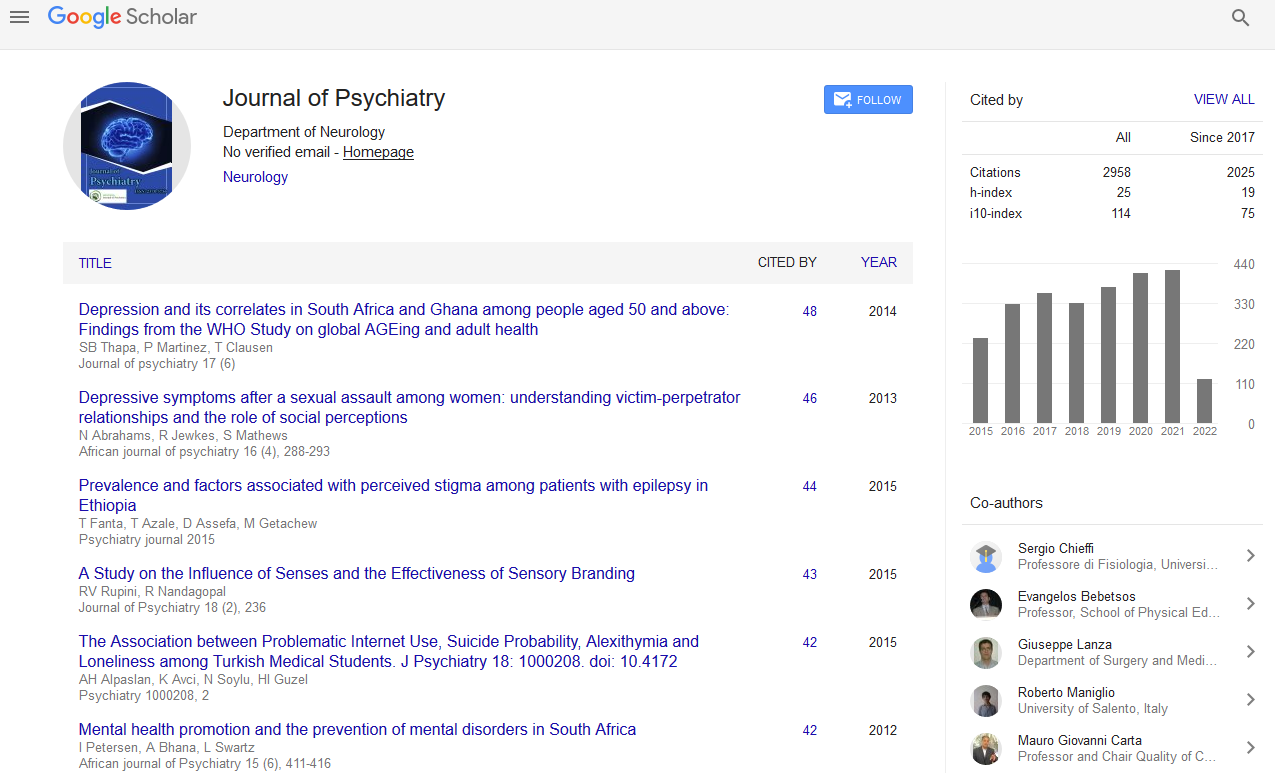PMC/PubMed Indexed Articles
Indexed In
- RefSeek
- Hamdard University
- EBSCO A-Z
- OCLC- WorldCat
- SWB online catalog
- Publons
- International committee of medical journals editors (ICMJE)
- Geneva Foundation for Medical Education and Research
Useful Links
Share This Page
Open Access Journals
- Agri and Aquaculture
- Biochemistry
- Bioinformatics & Systems Biology
- Business & Management
- Chemistry
- Clinical Sciences
- Engineering
- Food & Nutrition
- General Science
- Genetics & Molecular Biology
- Immunology & Microbiology
- Medical Sciences
- Neuroscience & Psychology
- Nursing & Health Care
- Pharmaceutical Sciences
Abstract
Neurophysiology of Aggression in Posttraumatic Stress Disorder
Stanley E Smerin, Aiqin Chen and He Li
Posttraumatic stress disorder (PTSD) is a universal anxiety disorder, affecting not only soldiers but also victims of every sort of traumatic stress-natural disaster, automobile collision, crime, domestic violence, bereavement. Aggressiveness, stemming from “intermittent explosive anger”, is a not infrequent comorbidity of PTSD, with the most serious consequences. The neurophysiology of aggression and anger in general, and PTSD in particular, is a jigsaw puzzle of which we are first gathering the pieces. In this chapter, PTSD is conceptualized as revolving around an idée fix of the traumatic experience, leading to fear and a derivative defensive form of aggression. The history of research in the neurophysiology of aggression and pertinent forms of memory and emotion are then reviewed, leading to a neuronal system that spans the brain. Some basic phenomena in neurophysiology are touched onsynaptic plasticity in the form of long-term potentiation of synaptic transmission, G-protein–coupled receptor modulation thereof, and the theta rhythm of the electroencephalogram-and the path we are following in our attempt to integrate these phenomena into a model of the neurophysiology of aggression in PTSD is described.


